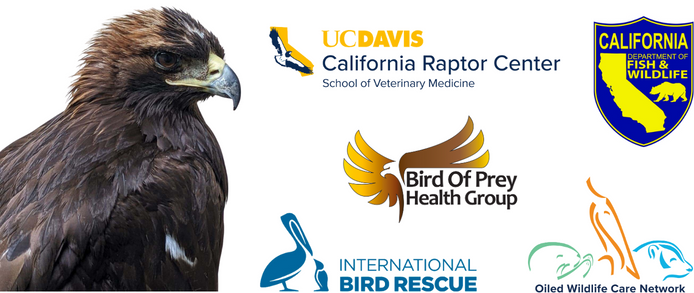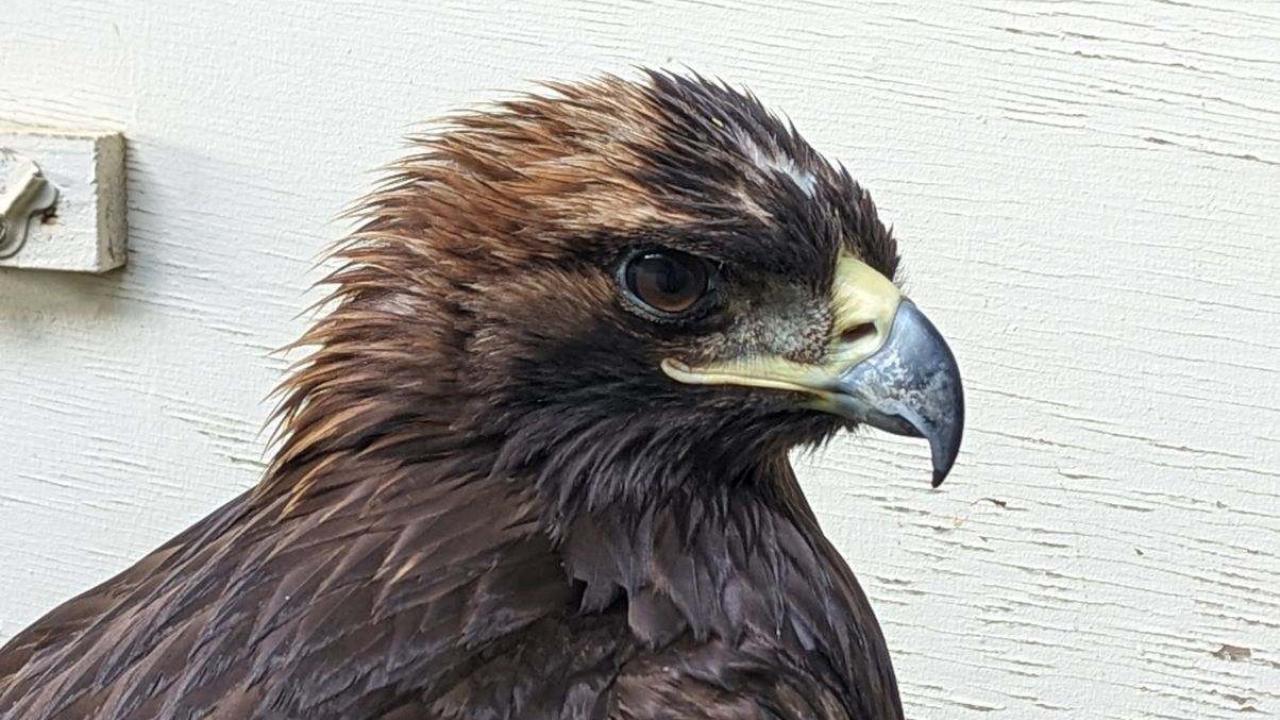
The *Oiled* Eagle Has Landed
On December 15th, 2023, the OWCN was contacted by the Office of Spill Prevention and Response (OSPR) about a golden eagle found covered in heavy oil. Our team helped identify and coordinate with potentially suitable care facilities with the capacity and expertise to handle an eagle, and selected the California Raptor Center, a program of the UC Davis School of Veterinary Medicine. The source of the eagle’s contamination is under investigation by OSPR and US Fish and Wildlife Service law enforcement personnel.
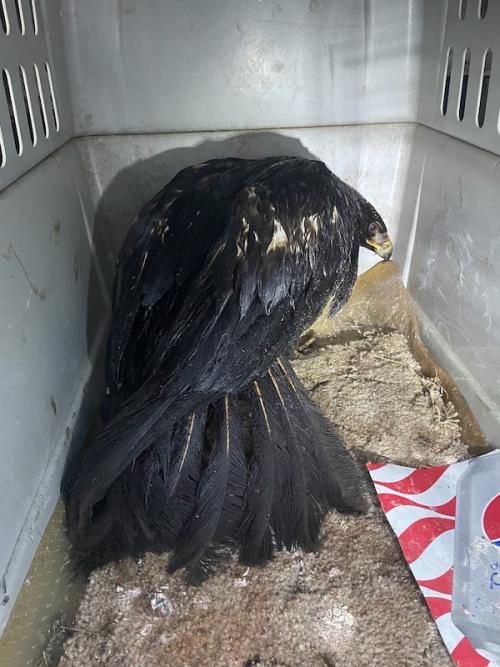
Raptors are not common patients during oil spills, but on occasion, a raptor will end up contaminated by a smaller or unidentified source of oil. We refer to oiled animals who are not part of a declared oil spill as “individually oiled animals” (IOAs). You can read more about the IOA Program in Jamie’s blog here. The majority of IOAs are seabirds affected by natural seeps offshore. In 2023, 485 of the 492 patients enrolled in the IOA program were waterbirds. Three IOAs, including this golden eagle, were raptors.
IOAs are rehabilitated under the permits of the Member Organization caring for them. In most cases, the Member Organization follows OWCN animal care protocols, but otherwise manages the care of the IOA on their own and in their own facility. In the United States, eagles receive special protection under the Bald and Golden Eagle Protection Act. Additionally, special permits are required to rehabilitate them. The California Raptor Center is one facility with the permits and experience to manage the stabilization and treatment of this eagle. As for removing the oil, that’s where the OWCN was happy to step in.
The golden eagle, determined to be a young male, was transported to the UC Davis Veterinary Teaching Hospital Companion Exotic Animal Medicine and Surgery Service for initial stabilization. The veterinary team found that the bird was underweight, 100% coated in oil, and had significant skin burns as a result of the oiling. They administered fluids and began medications to help stabilize the bird’s condition. Because of the condition of the bird’s skin, the OWCN Management Team recommended that the bird undergo wash the following day if the bird was stable.
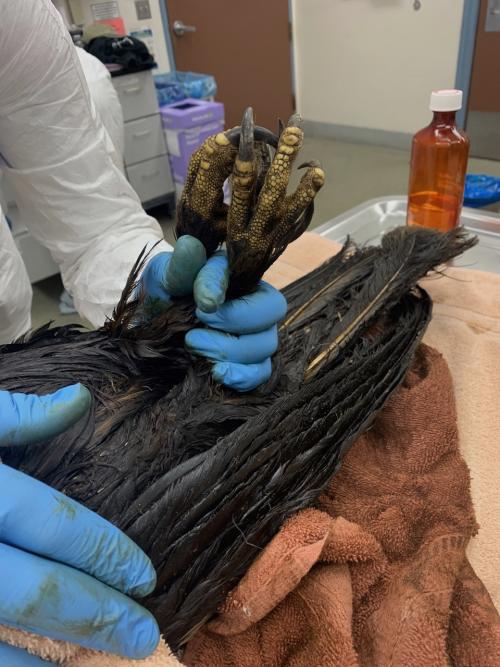
The nearest facility to wash a large bird is the San Francisco Bay Oiled Wildlife Care and Education Center in Cordelia. OWCN Management Team members Dr. Lorraine Barbosa and I (Sam Christie), and OWCN responder/International Bird Rescue’s Kelly Beffa assembled to form the wash team on Saturday December 16th. I have washed approximately a dozen eagles over the years and I have washed many birds who were 100% oiled. Let me tell you… This bird was OILED!
Upon seeing the eagle in the transport carrier, our wash team immediately recognized that this wash would be a strenuous effort and that a second wash would likely be necessary. For an oiled bird to be successfully cleaned and waterproof, every bit of oil must be removed. Per our processing protocol, we took feather samples and photos as evidence for law enforcement. We took a few additional oiled feathers to refine our approach to cleaning.
The Wash Procedure
We often refer to the wash of an oiled animal as a “wash procedure”. That’s because it is a multi-step process with important details to consider along the way. This distinction is important for the wellbeing of our patient. Attempting to wash an oiled animal without training can have disastrous results for the animal and can be dangerous for the humans as well. Curious about what our wash procedure looked like for this eagle? Let’s get into it!
1. Pre-wash Preparation
Before we even got the eagle out of his carrier, we were working on setting up our wash room. International Bird Rescue’s Norcal Wildlife Center Manager, Kelly, got to work warming up the water, filling wash tubs, and preparing a drying cage. Dr. Barbosa calculated doses for the medications we would use to sedate the bird for wash. And I, Sam—wildlife rehabilitator for the OWCN, tested the feathers and gathered our personal protective equipment (PPE). From testing the oiled feathers with our cleaning products, it was clear that we would need a lot of methyl oleate (pre-treatment) to reduce the viscosity and stickiness of the oil, and then a proper dilution of Dawn (detergent) to remove the oil from the bird.
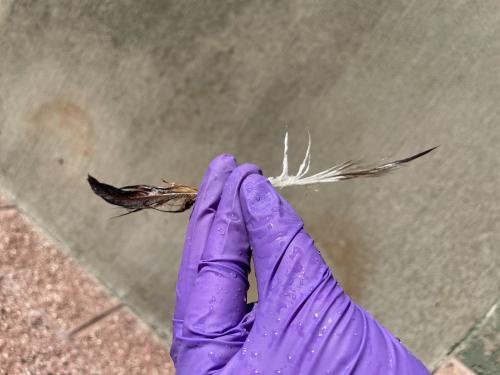
2. Sedation
Once our wash room and supplies were ready, we administered the intramuscular sedative injection and let the eagle rest in its carrier until the medication took effect. To safely wash a raptor, we must “ball” their feet. In this method, we carefully wrap the raptors’ feet into a bandage resembling a boxing glove. This protects the handler from the bird’s sharp talons. This was especially important for this bird whose talons are longer than a human finger!
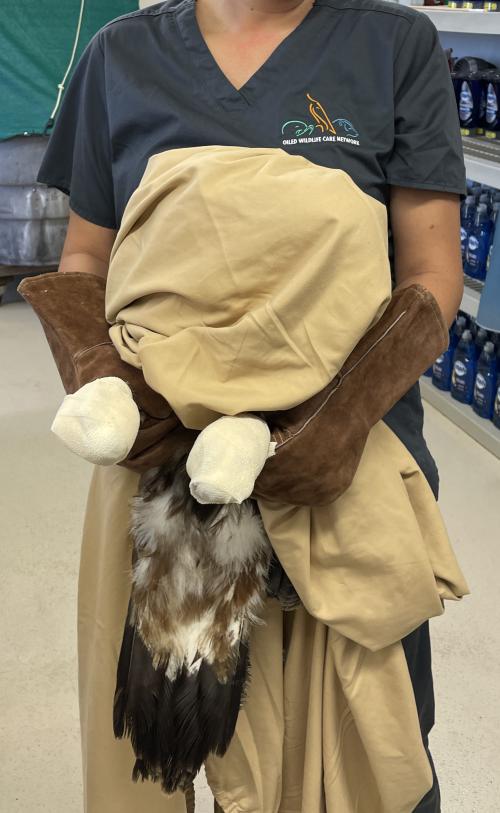
3. Pre-Treatment
Wearing our PPE, we thoroughly applied the warmed pre-treatment to the bird to begin loosening the oil. With deep oiling that reaches the skin, it’s often at this point that we begin to see the extent of the chemical burns caused by the oil. The eagle’s skin was in bad shape. He had burns in many of the common places: knees, elbows, axilla.
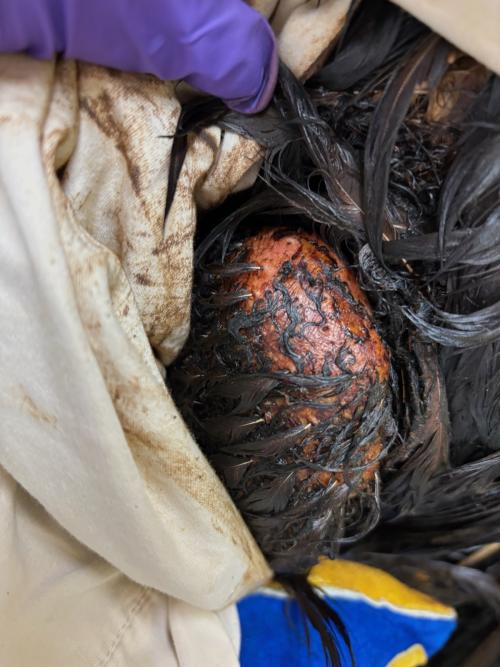
4. Wash
After about 10 minutes, the pre-treatment was working and the oil was starting to drip off of the feathers. With the amount of oil on this bird and the amount of methyl oleate we needed to apply, it was necessary to add an extra step to the wash procedure. We call it the bug sprayer, but it’s really a hose end sprayer which allows us to conduct a first “rinse” of a bird with soapy water. This method helps to remove a significant amount of oil and pre-treatment prior to the first wash tub. Ultimately, it saves time and cuts down on the number of wash tubs. It isn’t appropriate for every case, but it was the right tool for this bird. After the sprayer, the wash proceeded as usual with several wash tubs. Though lightly sedated, the eagle proved challenging to wash. His size, strength, and the amount of oil on him were all factors we had to account for in the procedure.

5. Rinse
Aside from a few small changes, the rinse for the eagle followed the same process we use for waterbirds. We removed the foot wraps during the rinse in order to carefully wash his feet. Partway through the rinse, Dr. Barbosa administered the sedative reversal which took effect quickly. Once all traces of soap had been rinsed away, we moved a very wet looking eagle to his drying cage.
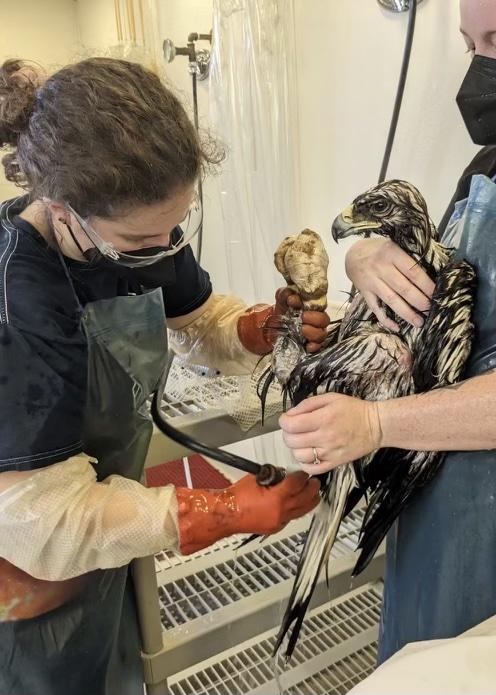
6. Drying
We used the Intensive Care Unit for drying as the room was quiet, didn’t have other patients, and could be sufficiently warmed. We elected to use our traditional pet dryers on this bird to speed up the drying process (sometimes non-waterbirds are dried using only a heat lamp and a very warm room). We periodically checked the bird’s body temperature and after about three hours, the bird was sufficiently dry and ready to be transported back to the California Raptor Center for continued care. Before loading him into a clean transport carrier, we re-applied his tail guard (to prevent feather breakage) and administered subcutaneous fluids and his evening medications.
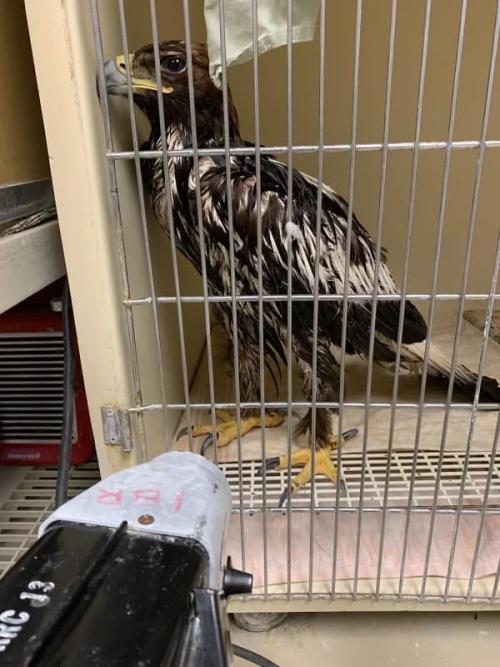
I mentioned earlier that we knew once we saw him that this bird’s wash would be complicated. And we were correct! From pre-treatment to rinse, our wash procedure took about 45 minutes. That is pushing the limits of how long we like to have a bird in hand. The risk of the animal crashing increases with time spent under stressful conditions. We knew we had missed a few tiny spots of oil and that we likely hadn’t removed all of the pre-treatment. Our goal is always for a single, “curative” wash procedure, but two washes was a more realistic goal with a large, heavily oiled bird; particularly with heavy crude oil. On December 22nd, we washed the eagle a second time. The second wash was much quicker, and the bird handled it well.

The team at the California Raptor Center reports that the eagle steadily improved after his washing and has moved on to the next phase of his rehabilitation. This was a complex case with many experts working together. We’d like to thank the Office of Spill Prevention and Response, the Companion Exotic Animal Medicine and Surgery Service at the UC Davis Veterinary Teaching Hospital, the California Raptor Center, International Bird Rescue, and the Bird of Prey Health Group for lending their expertise to help this eagle.
